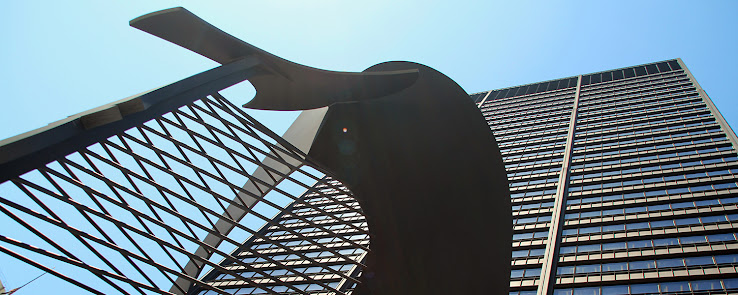

"12151791" - by Amy Larimer and Peter Bernheim ...
Location: McCormick Tribune Freedom Museum ...
The sculpture is named after the date the First Amendment was ratified. The two-story piece is made up of 800 cascading steel plates ... and each of these plates is inscribed with quotes of individuals who shaped the history of our freedom ... These hovering metal pieces are supported by a series of structural chords and each chord represents a segment of time. So the sculpture "12151791" is a suspended timeline, a chronicle of individuals' contribution to decades of democracy and freedom ...
This piece was selected from 700 entries made ... in an international juried art competetion held in the year 2005.

Click on the image for enlarged view ...




























